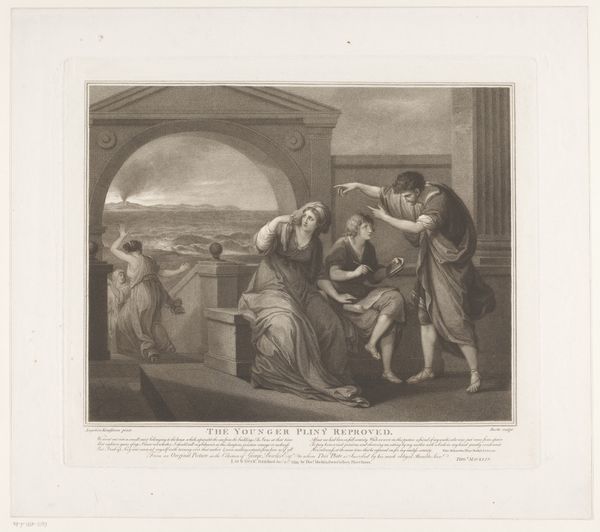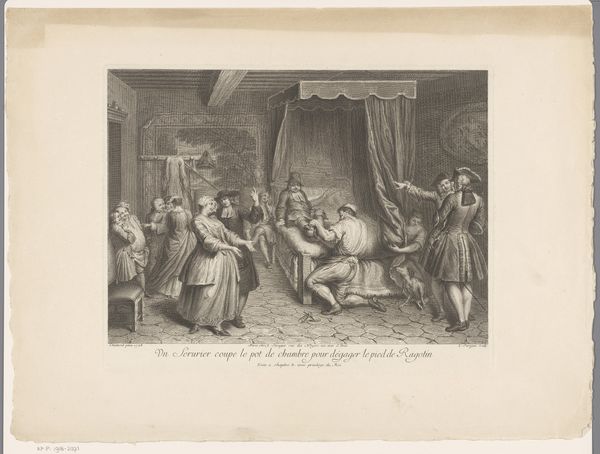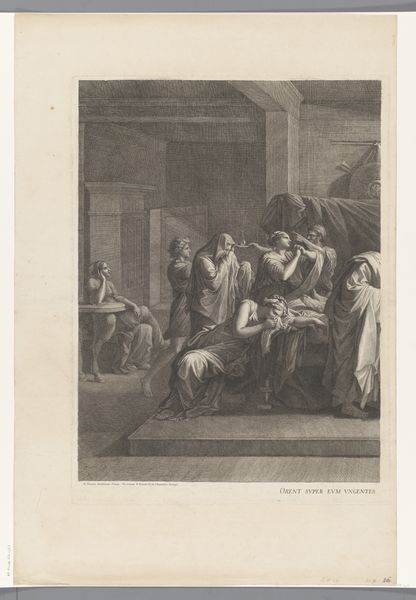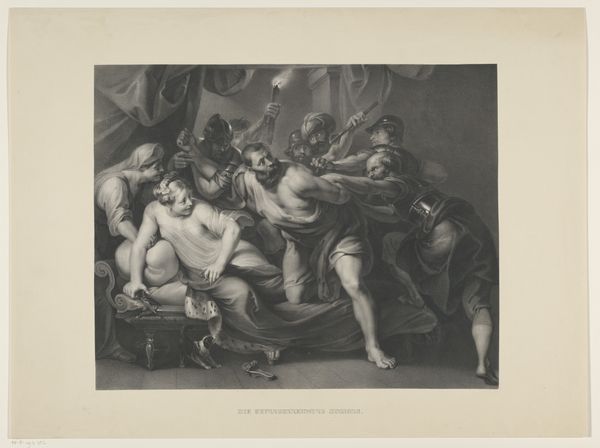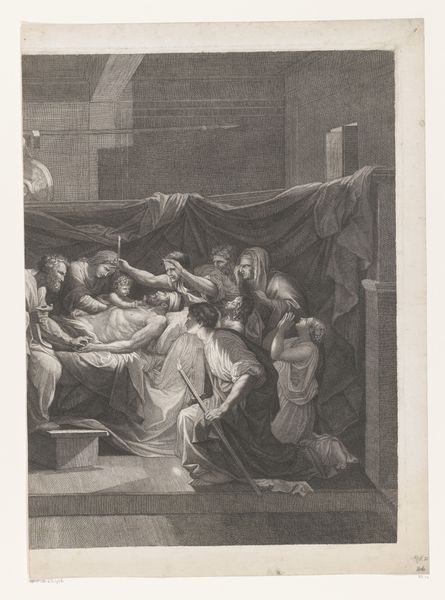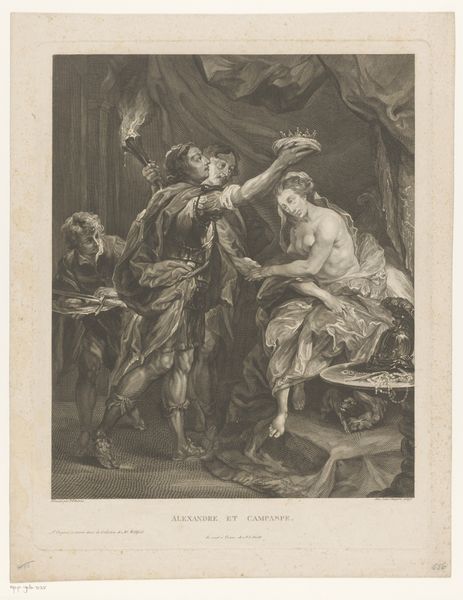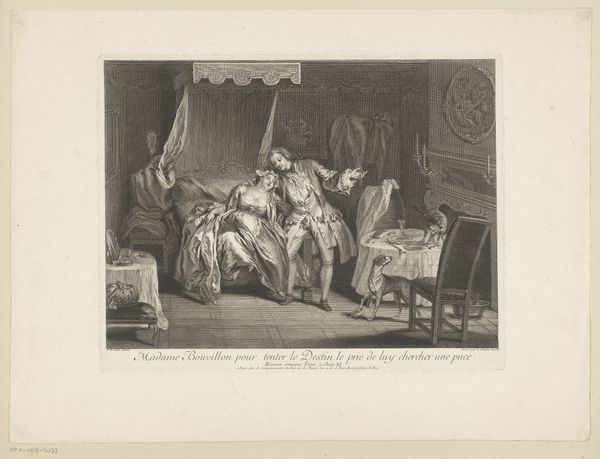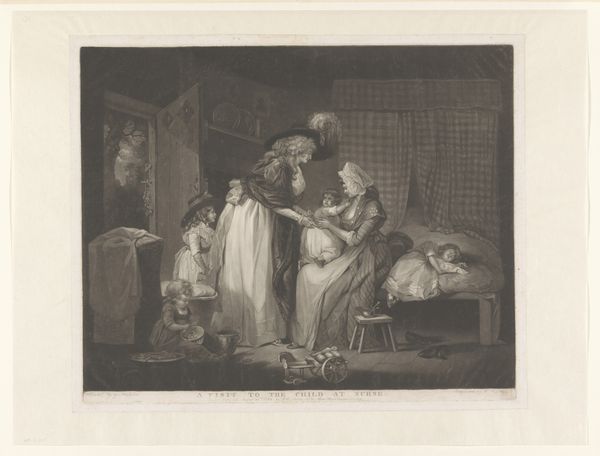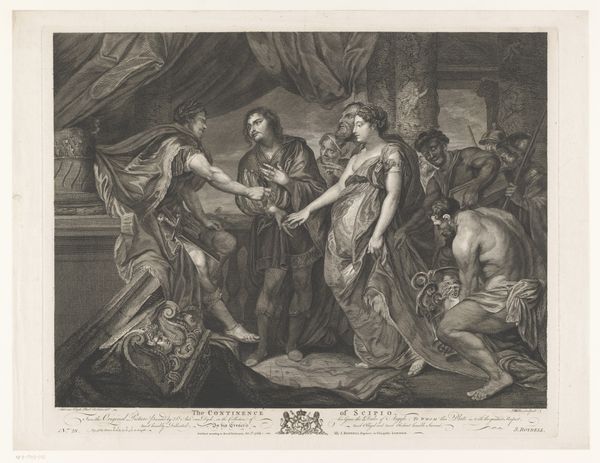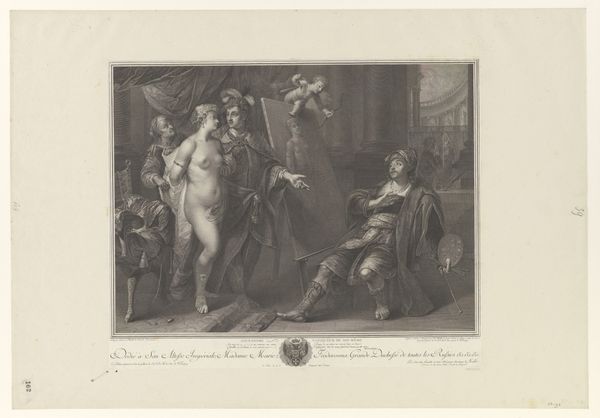
engraving
#
portrait
#
neoclacissism
#
classical-realism
#
history-painting
#
engraving
Dimensions: height 429 mm, width 500 mm
Copyright: Rijks Museum: Open Domain
Editor: This engraving, "Virgil Writing His Epitaph" by Thomas Burke, made in 1794, portrays a solemn scene. The atmosphere seems heavy with a sense of finality. I'm curious, what resonates with you when you look at this piece? Curator: What immediately strikes me is the symbolic weight carried within this neoclassical scene. Notice the lyre cast aside – a potent symbol of silenced poetry and perhaps, of life's fleeting nature. Editor: Oh, I see, it's lying almost forlorn on the floor. What does that signify in this image? Curator: It tells us about loss, certainly, but also about transformation. Think about what Virgil, as a poet, represented to the cultural memory of the late 18th century: order, reason, a connection to a glorious past. His looming death signals a break, a shift in that perceived order. Editor: So, you're suggesting the artist is not just depicting a scene, but also reflecting on a broader cultural moment? Curator: Precisely! Neoclassicism frequently evokes a sense of nostalgia and the weight of history. Even the act of writing his own epitaph implies a desire to control his narrative, to shape how he’ll be remembered. Editor: It’s interesting how he is writing his epitaph to immortalize himself and to maintain order. Curator: Indeed, the piece functions as a microcosm of larger anxieties about mortality and the endurance of legacy. Editor: Looking at it now, it makes me appreciate the many layers an image can have. Thanks for pointing those out! Curator: It’s been my pleasure; noticing symbols enables us to truly appreciate artwork beyond surface appearances and discover meaning.
Comments
No comments
Be the first to comment and join the conversation on the ultimate creative platform.
